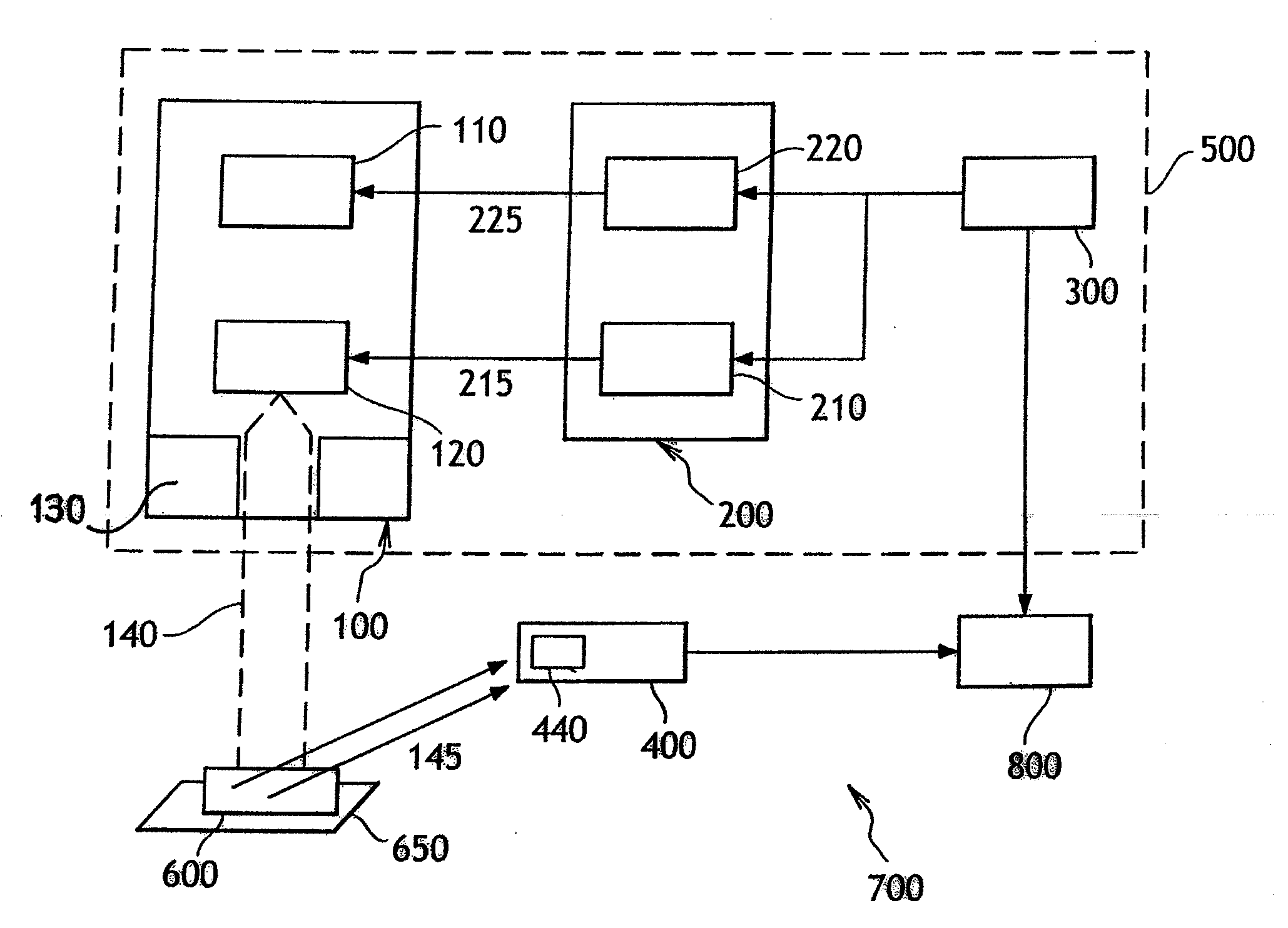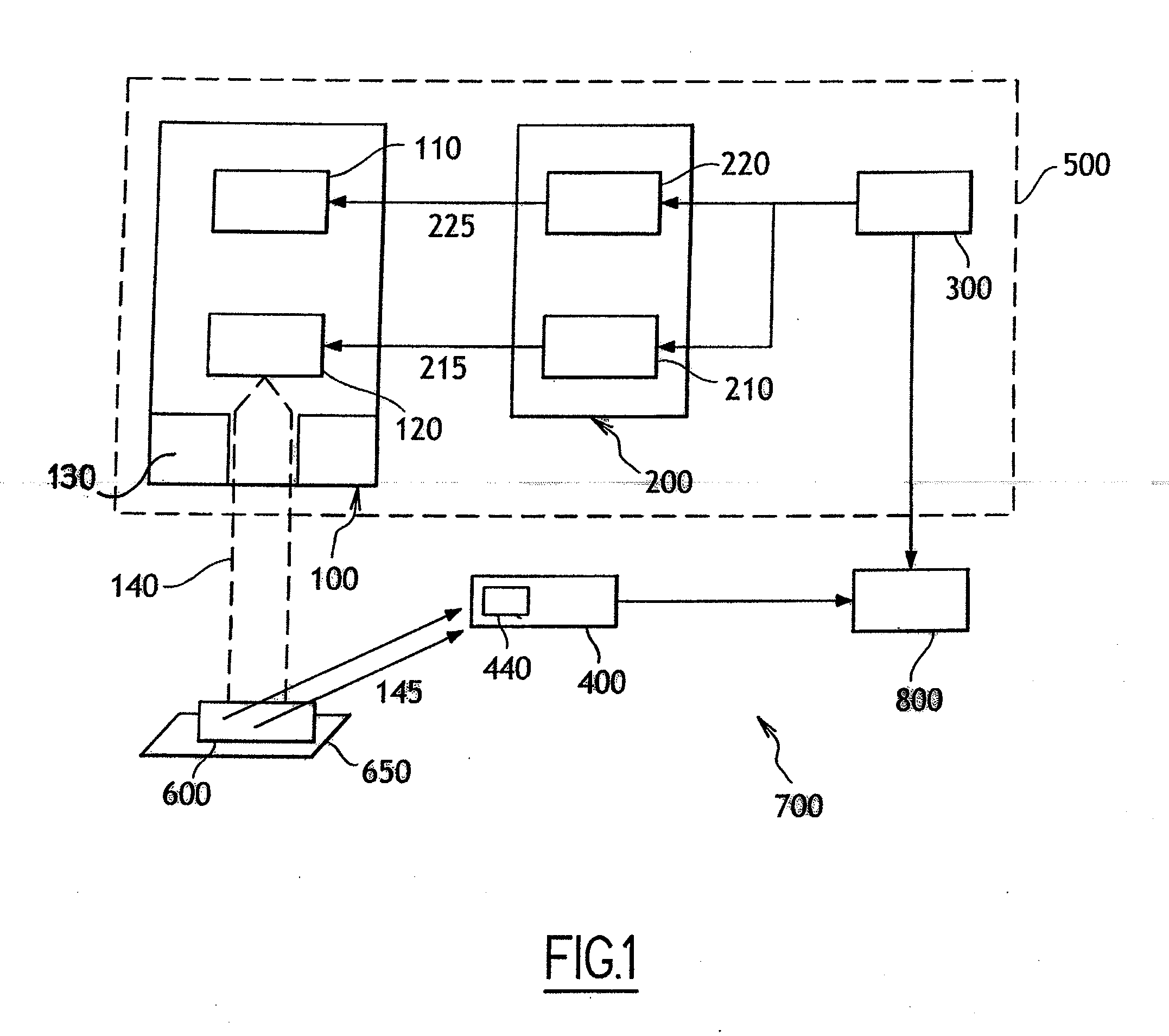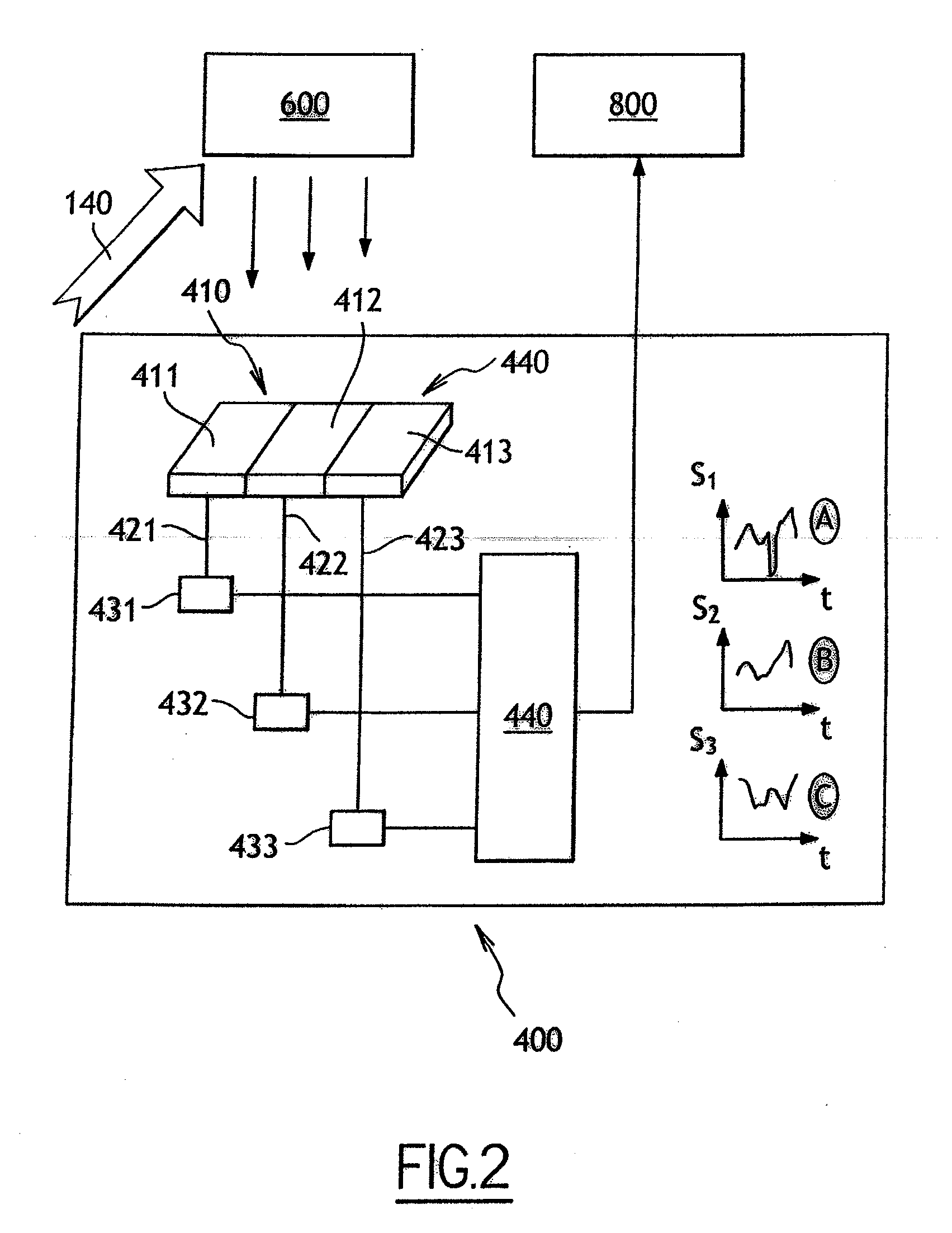A detection system and a detection method based on pulsed energetic particles
a detection system and energetic particle technology, applied in the direction of material analysis using wave/particle radiation, instruments, masers, etc., can solve the problems of deteriorating the signal to noise ratio, tna screeners produced an unacceptable rate of false alarms, and accelerated material ejectivity, so as to reduce false alarms and improve data output for operator decision, the effect of fast detection tim
- Summary
- Abstract
- Description
- Claims
- Application Information
AI Technical Summary
Benefits of technology
Problems solved by technology
Method used
Image
Examples
Embodiment Construction
[0065]Now referring to the drawings, an identification system 700 according to the present invention is depicted in the FIG. 1 and comprises:
[0066]a conveyor system 650 for items 600 to be inspected;
[0067]an energetic particle source 500;
[0068]a detection unit 400; and
[0069]a data processing unit 800.
[0070]The source 500 generates a high flux and a high intensity of short pulse energetic particles including both neutrons and gamma photons directed toward an item 600 to be checked.
[0071]The source includes a particle generator 100 which generates the flux of energetic particles in response to a pulsed power unit 200 controlled by a control unit 300.
[0072]In operation, a short pulse of high density, high flux energetic particles is generated and directed towards an item 600 placed in an inspection region towards which a beam collimator 130 is directed.
[0073]The conveyor system 650 can be conventional and is used for moving the items 600 such as pieces of baggage by appropriate increme...
PUM
 Login to View More
Login to View More Abstract
Description
Claims
Application Information
 Login to View More
Login to View More - R&D
- Intellectual Property
- Life Sciences
- Materials
- Tech Scout
- Unparalleled Data Quality
- Higher Quality Content
- 60% Fewer Hallucinations
Browse by: Latest US Patents, China's latest patents, Technical Efficacy Thesaurus, Application Domain, Technology Topic, Popular Technical Reports.
© 2025 PatSnap. All rights reserved.Legal|Privacy policy|Modern Slavery Act Transparency Statement|Sitemap|About US| Contact US: help@patsnap.com



